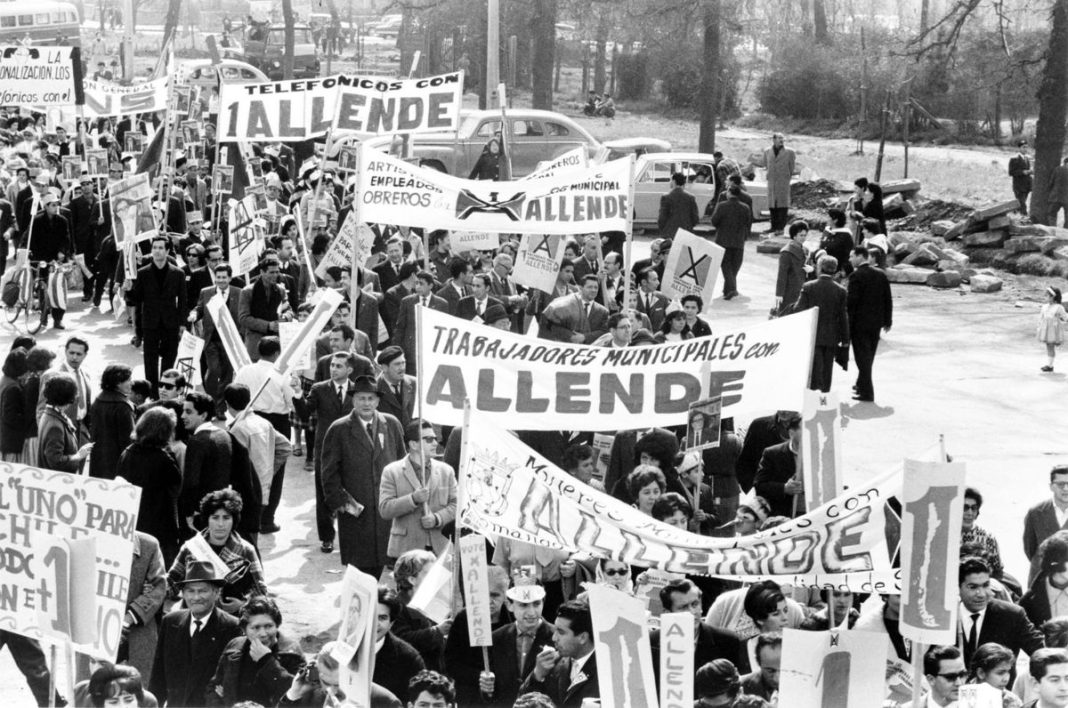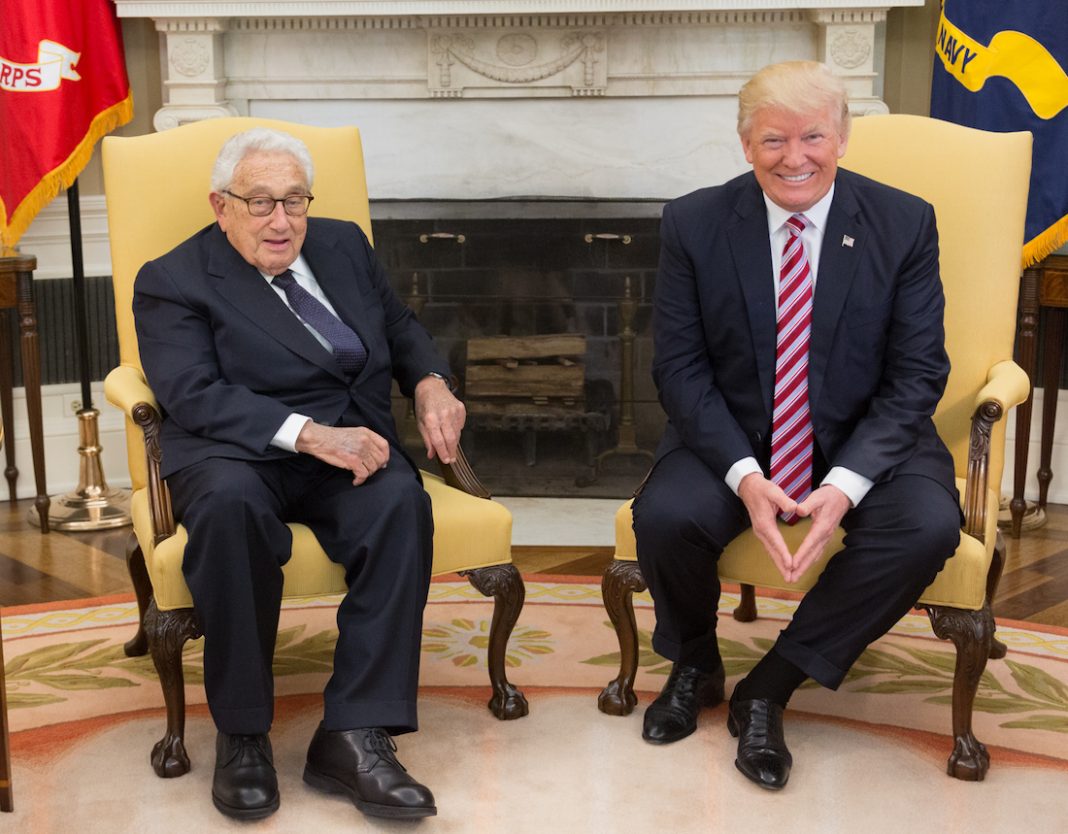By Stephen D. Morrison, author and theologian in Columbus, Ohio
When the CIA Conspired to Crush Liberation Theology
[draft] – expand
When Latin American liberation theology was developing, the United States took part in the so-called Cold War. One of the common misconceptions about the Cold War is that it was bloodless. The reality is, it was a brutal struggle, especially for Latin America. For example, the CIA actively supported anti-communist death squads in the region through the now declassified Operation Condor, killing an estimated 60,000 civilians simply because of their left-leaning politics. And that is just one such operation by the CIA among several dozen.
The sad reality is that most Americans are entirely unaware of the violent, repressive terrorist activities of the United States in Latin America during the Cold War. The war was in no way “cold” for the poor and underdeveloped Global South. The brutality was immense, with the United States as the primary instigator of terror.
I have been reading about the history of the Cold War, which in and of itself is not the subject of this post. Instead, I wanted to bring before you a forgotten piece of history regarding the CIA’s conspiracy to “crush” liberation theology. I learned of this story (in a passage quoted below) from Vijay Prashad’s excellent book, Washington Bullets. As a primer in US foreign affairs post-WWII, it is a book I highly recommend every American read. We are often too ignorant of our country’s history.
Liberation theology was perceived as a threat to US dominance in the region by leaders in the CIA and even the White House. This was because the core tenant of liberation theology is God’s preferential option for the poor. Thus, the Gospel is not neutral in the struggle for economic justice. God is on the side of the poor and oppressed. For the US government, by siding with the interests of the poor and oppressed, the proponents of liberation theology stood against the interests of the empire. And that was deemed unacceptable. Thus, the conspiracy to crush liberation theology began.
I will quote for you the whole passage of this forgotten history. My interest in liberation theology has been well-documented both on this website and in my books (especially James Cone in Plain English). But in all my studies of liberation theology, I had no idea that the United States government was actively plotting against its proponents. But it is an important revelation to discover that this so-called Christian nation repressively acted directly against one of the most important theological developments of the twentieth and twenty-first centuries.
Prashad tells the full story:
On 5 March 1971, Nixon assembled his closest advisors to the Oval Office. They were talking about Latin America. Nixon pointed out that the single most important event in the past ten years was the ‘deterioration of the attitude of the Catholic Church.’ ‘[T]hey’re about one-third Marxist, and the other third are in the center, and the other third are Catholics… in the old days,’ he said, ‘you could count on the Catholic Church for many things to play an effective role.’ Not anymore, not after the Second Vatican Council of 1962 and the emergence of liberation theology. Several key Catholic priests had come to the understanding that Jesus was a revolutionary, and so they should stand with the peasants and workers against the oligarchs and the armies. Since the Church had provided the ideological and cultural scaffolding to prevent the growth of radical ideas, the drift of some priests towards the left raised serious concerns not only amongst the oligarchies and the militaries, but also in the Vatican’s upper echelon and in the United States government.
In 1975, not long after Nixon’s ruminations about Catholicism, Bolivia’s Hugo Banzer, with advice from his Nazi security chief Klaus Barbie, urged his Interior Ministry to draw up a plan against liberation theology. […] In 1975, the Ministry was run by Juan Pereda Asbún, who would follow Banzer onto the dictator’s chair. Pereda worked closely with the CIA to draw up what would be known as the ‘Banzer Plan,’ which was a direct attack on liberation theology. Bolivian intelligence, joined by the CIA and by the intelligence services of ten other Latin American countries, began to compile dossiers on liberation theologists, to plant Communist literature in the churches to shut down any progressive Church publication, and to arrest and expel foreign priests and nuns who believed in liberation theology. On 16 July 1975, the Bolivian intelligence services arrested three Spanish nuns in the town of Oruro, accused them of conspiring with labour unions to hold a strike, and then deported them. Such arrests in deportations became commonplace; the Vatican did nothing to defend its priests and nuns. The CIA financed fascistic religious groups that would then bomb churches and assault priests and nuns affiliated with liberation theology.
The violence would escalate to murder. In El Salvador, where priests and nuns took up residence in the slums, the fascistic religious paramilitaries circulated a simple call—haz patria, mata un cura (‘be a patriot, kill a priest’). Rutilio Grande, a Jesuit priest, was murdered by the Salvadoran security forces in 1977 in a spate of murders which would culminate in the killing by a far-right death quad of the Archbishop of San Salvador Oscar Romero in March 1980. In December of 1980, four nuns from the United States were abducted, raped, and murdered by members of El Salvador’s National Guard. It would not end there. In 1989, six Jesuit priests, their housekeeper, and her daughter were brutally killed by a Salvadoran army battalion that had been trained by the United States. Cardinal Alfonso López Trujillo, as general secretary of the Latin American Episcopal Conference, would leave his church and go into the forests of Colombia with the paramilitaries; he was known to point out radical priests and nuns, who would be executed. López Trujillo would later head the Vatican’s campaign against homosexuality. In 1979, he organized a conference of Latin American Bishops, where Pope John Paul II said that the ‘idea of Christ as a political figure, a revolutionary, as the subversive of Nazareth, does not tally with the Church’s catechesis.’
Within a decade, Nixon’s worries about liberation theology morphed into two documents prepared for Ronald Reagan’s administration […] The main point was that the United States must protect ‘the independent nations of Latin America from communist conquest’ and ‘preserve the Hispanic American culture from sterilized communist conquest.’ The first document said that priests affiliated with liberation theology ‘use the church as a political arm against private property and productive capitalism.’ The next document noted that the US government must make closer ties with the Catholic hierarchy to crush liberation theology. In 1983, Pope John Paul II went to Nicaragua, in the throes of its revolution, to attach priests and the flock for their attraction to liberation theology.
Not only had the Vatican been seized by the threat from liberation theology, but Catholics seemed to drift off towards evangelical churches—many of them financed by US evangelical projects, such as Pat Robertson’s Christian Broadcasting Network. […] Protestant sects, particularly those with US roots, preached the Gospel of individual enterprise not social justice. That is why Ríos Montt left the Catholics and joined the Gospel Outreach Church of Eureka (California). When Ríos Montt came to power in a military coup in 1982, Pat Robertson dashed down to Guatemala City to interview him for The 700 Club; Robertson portrayed Ríos Montt to his more than three million viewers as having ‘a deep faith in Jesus Christ.’ This is Ríos Montt, who not only let loose his army to conduct a genocide of his own people, but who said, ‘[I]f you are with us, we’ll feed you; if not, we’ll kill you.’ A decade before, the leaders of 32 Pentecostal churches in Chile welcomed Pinochet’s coup. They said that the overthrow of Allende ‘was God’s answer to the prayers of all the believers who recognized that Marxism was the expression of a satanic power of darkness. We, the evangelicals, recognize as the higher authority of our country the military junta who in answer to our prayers freed us from Marxism.’ 1
The evangelical alliance with fascism in Latin America, as told in the last paragraph, continues today with the rise of far-right evangelicalism in America. Those surprised by Trump and his unwavering support by evangelicals should consider how this phenomenon is more deeply rooted in evangelicalism itself. In other words, it is not a flaw that fascistic tendencies have arisen but because of something inherent to evangelicalism itself. American Evangelicalism has flirted with fascism from the beginning. As James Cone has shown in his powerful body of work, the complicity of the white church in racism in America is deeply rooted in our theology. Racism is a theological problem that must bear fruit in social justice and political change. Theology without praxis is an empty language game. The theology of evangelicalism has been proven bankrupt by its political praxis, not only in its recent alliance with Trumpism but with the above example in Latin America.
That is why I think liberation theology is one of the most important theological developments of recent memory. It rejects the fundamentally gnostic tendencies of evangelicalism—its apoliticism and escapism—and recaptures the Gospel as the message of liberation, good news to the poor, ie, as the message Christ proclaimed (Luke 4). What good is our Gospel if it is concerned only with the ethereal soul without caring for the material and bodily needs of actual human beings? It is opium and a delusion. Thy Kingdom come, thy will be done, on earth as it is in heaven. That is our prayer. Not that we might escape the earth one day in an escapist flight to heaven, but that we might change the earth to look like heaven. Thus, a Gospel that does not make its way to earth, with all its material and human concerns, is not the Gospel Christ proclaimed.
The story recounted here offers a helpful contextualization of liberation theology and its importance. It gives me a new perspective as I read liberation theology. I hope it does the same for you.



